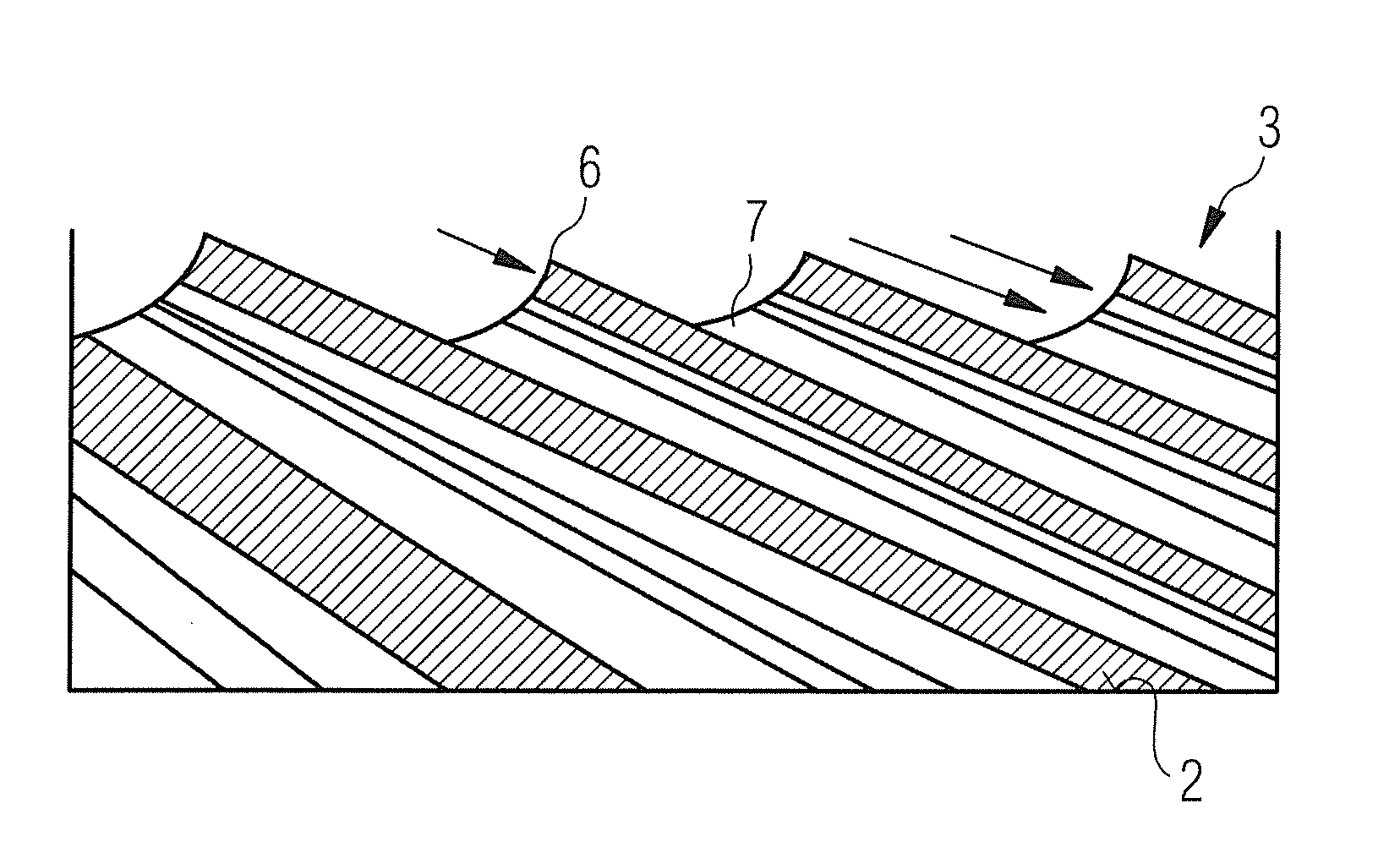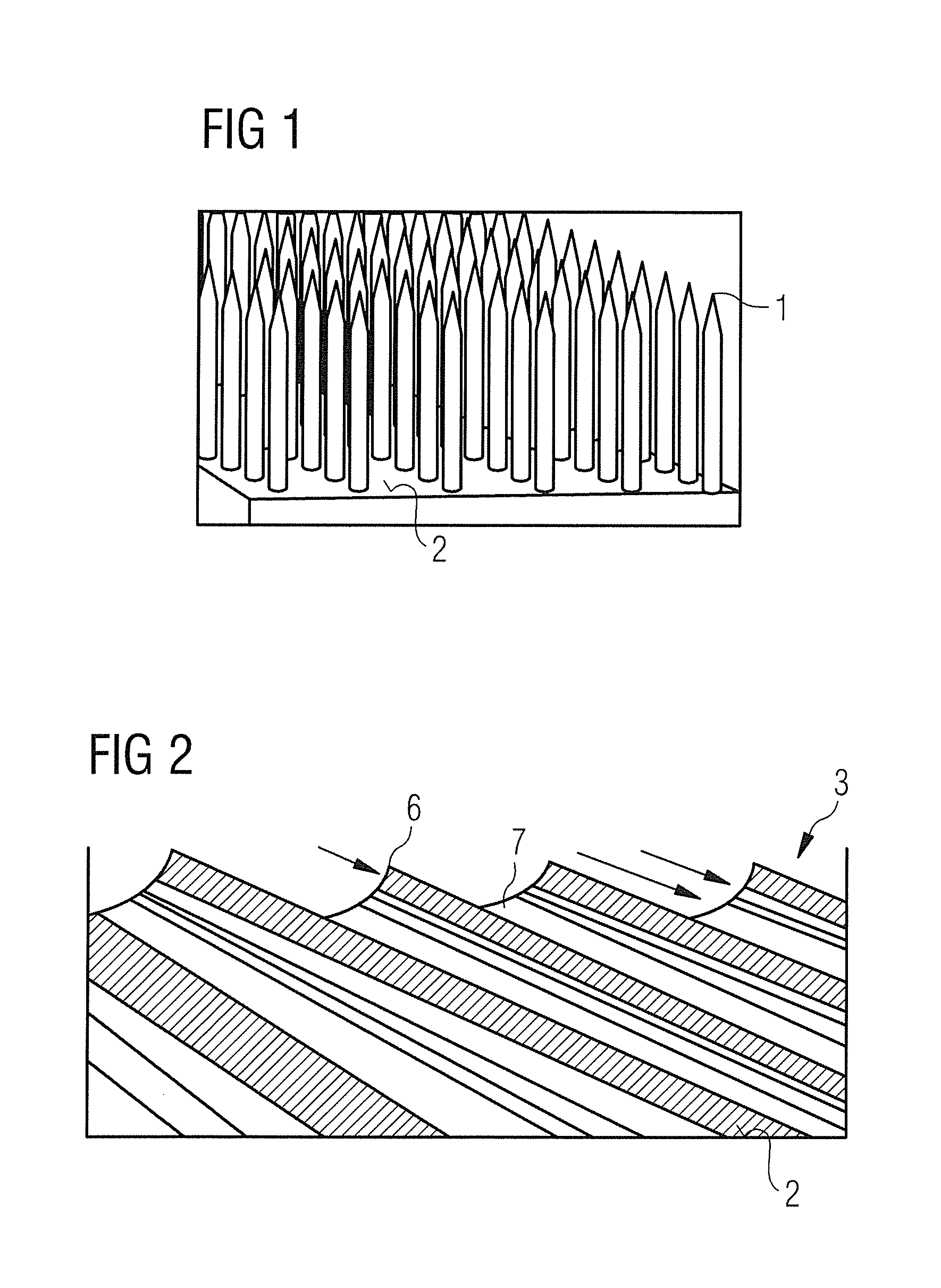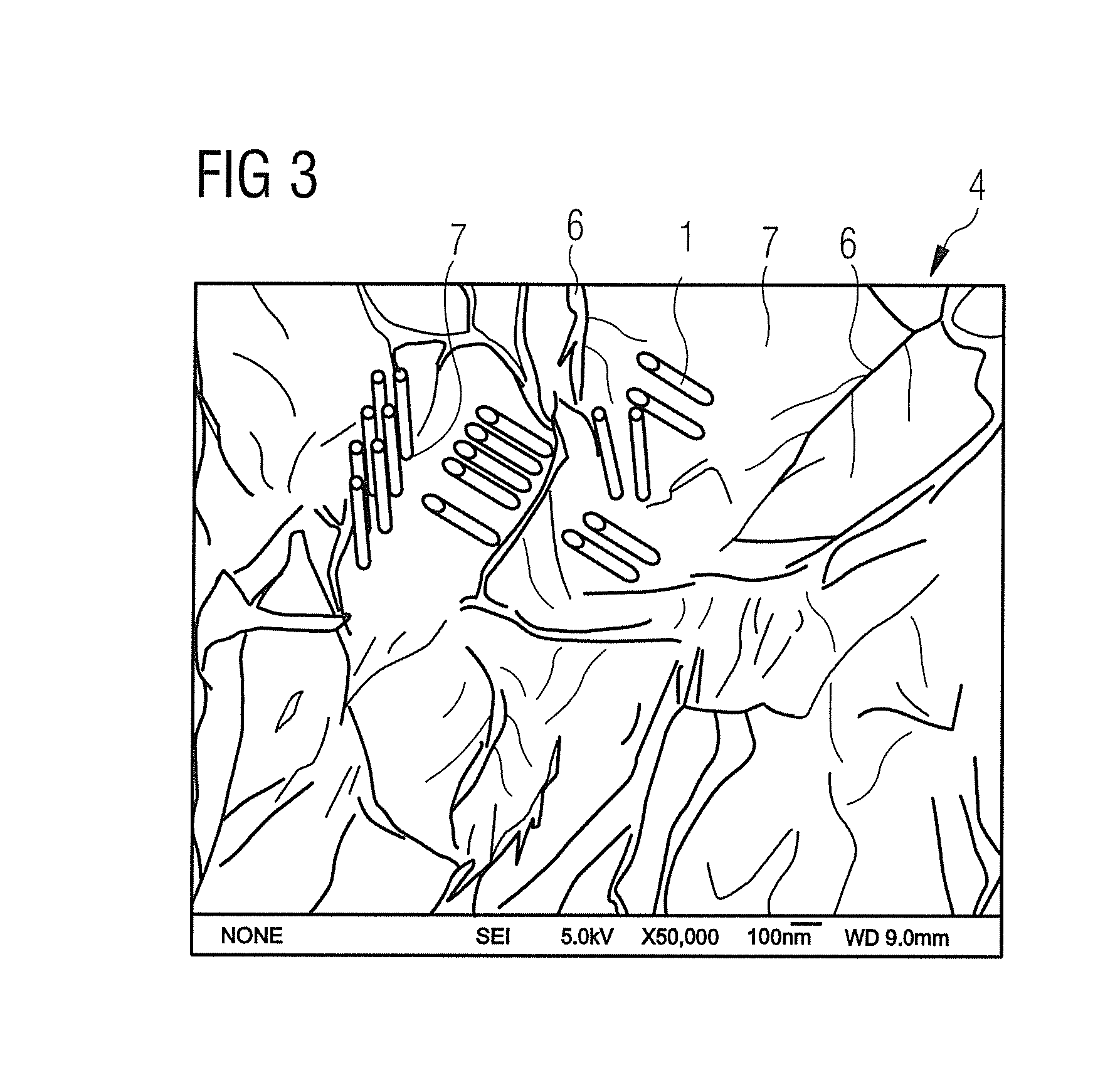Substrate for a field emitter, and method to produce the substrate
a field emitter and substrate technology, applied in the manufacture of discharge tube main electrodes, electrode systems, electric discharge tubes/lamps, etc., can solve the problems of low mechanical stability and low current of computed tomography, and achieve long-term durability and high currents.
- Summary
- Abstract
- Description
- Claims
- Application Information
AI Technical Summary
Benefits of technology
Problems solved by technology
Method used
Image
Examples
Embodiment Construction
[0028]FIG. 1 schematically shows a CNT forest on a conductive surface. The peaks 1 of the CNTs are apparent.
[0029]The advantage of the CNTs is that high emitter currents can be emitted at numerous CNT point sources. The bonding of the pure CNTs to metal surfaces can be supported by conductive adhesives. Pure multiple graphite binder layers combine the advantages of high emitter currents, mechanical stability and negligible components of low molecular weight and therefore are particularly well suited for high vacuum applications.
[0030]FIG. 2 shows the graphite layer structure 3, wherein the graphite layer is arranged like an unfolded paper or film on the substrate surface 2. The graphite layer structure shows high emitter currents at the long emitter edges 6 or graphene edges. The valleys 7—in which the peaks of the CNTs according to the invention can be arranged according to one embodiment of the invention—lie between the emitter edges 6.
[0031]FIG. 3 shows the morphology of a graphi...
PUM
| Property | Measurement | Unit |
|---|---|---|
| temperatures | aaaaa | aaaaa |
| temperature | aaaaa | aaaaa |
| electrically conductive | aaaaa | aaaaa |
Abstract
Description
Claims
Application Information
 Login to View More
Login to View More - R&D
- Intellectual Property
- Life Sciences
- Materials
- Tech Scout
- Unparalleled Data Quality
- Higher Quality Content
- 60% Fewer Hallucinations
Browse by: Latest US Patents, China's latest patents, Technical Efficacy Thesaurus, Application Domain, Technology Topic, Popular Technical Reports.
© 2025 PatSnap. All rights reserved.Legal|Privacy policy|Modern Slavery Act Transparency Statement|Sitemap|About US| Contact US: help@patsnap.com



